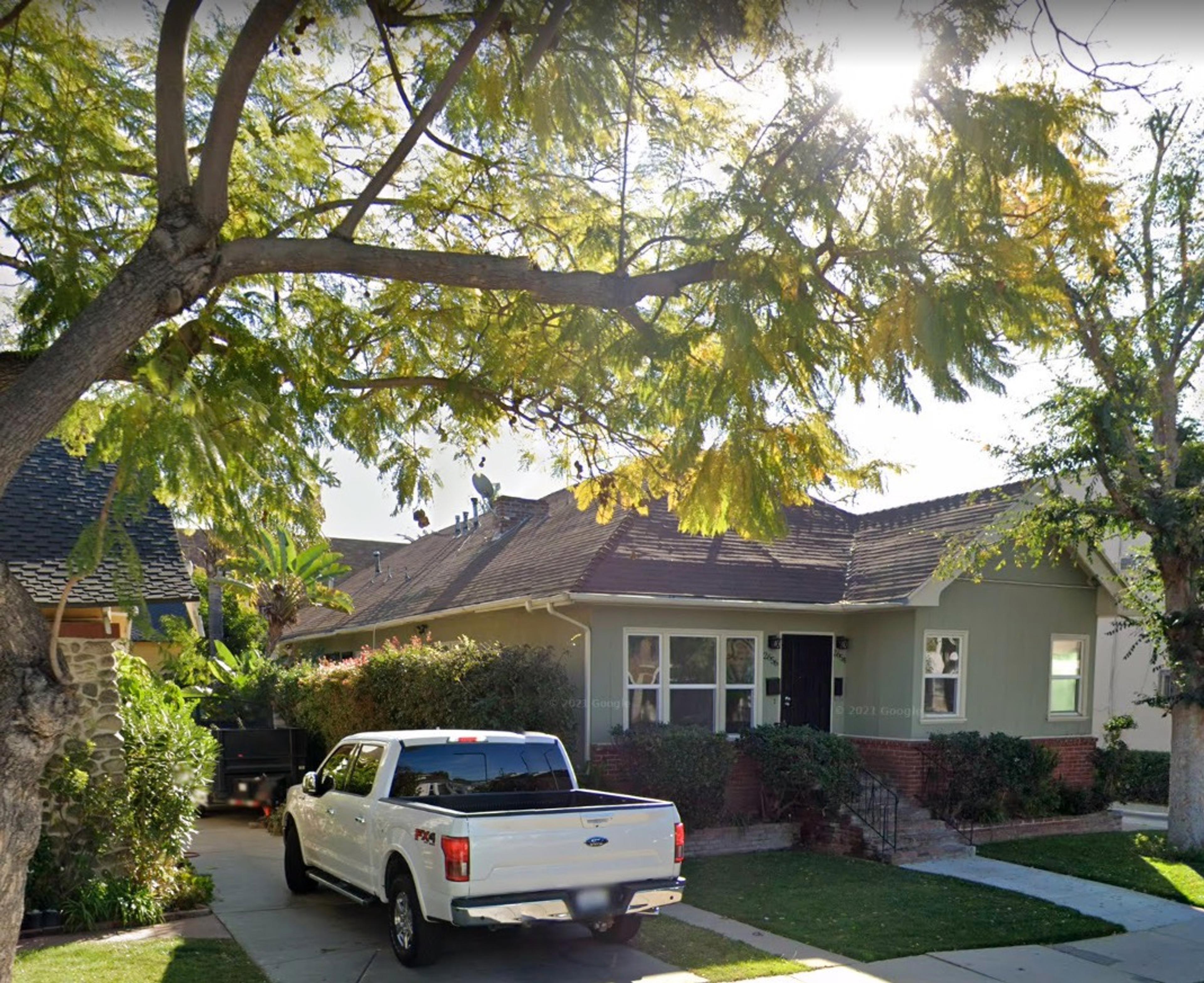The 2600 block of South Magnolia has some of the most magnificent houses in town. A festival of two-story Edwardians, each house better than the next:
Look ma, no stucco!
Ok, yes, there is one that's taller than two stories. If you count a tower; that house looks, you know, like this:
Soooo, you can totally understand why the YIMBYs would justifiably scream "this is the worst place on earth! It is an affront to God-King Wiener!" and need to demolish this house smack-dab in the middle of the block—
—which, when sold in 1905, was noted for its flemish finish and artistic fixtures—
—and replace it with something twice as tall as anything else in the neighborhood:
2656 Magnolia will be demolished by beloved Orion Housing. They've built about a dozen (and counting) bland boxes in favor of Old LA, so in this case, expect something similar:
Reminds me of what Orion Housing did a couple blocks away on similarly bucolic 25th Street—
—along with too many nearby neighborhood examples to speak of...though, speaking of, many of the best houses along Magnolia, specifically, are going or gone; I wrote a bit about that here a couple years ago.
So long, West Adams! You sure had something, once!
About Nathan Marsak
NATHAN MARSAK says: “I came to praise Los Angeles, not to bury her. And yet developers, City Hall and social reformers work in concert to effect wholesale demolition, removing the human scale of my town, tossing its charm into a landfill. The least I can do is memorialize in real time those places worth noting, as they slide inexorably into memory. In college I studied under Banham. I learned to love Los Angeles via Reyner’s teachings (and came to abjure Mike Davis and his lurid, fanciful, laughably-researched assertions). In grad school I focused on visionary urbanism and technological utopianism—so while some may find the premise of preserving communities so much ill-considered reactionary twaddle, at least I have a background in the other side. Anyway, I moved to Los Angeles, and began to document. I drove about shooting neon signs. I put endless miles across the Plains of Id on the old Packard as part of the 1947project; when Kim Cooper blogged about some bad lunch meat in Compton, I drove down to there to check on the scene of the crime (never via freeway—you can’t really learn Los Angeles unless you study her from the surface streets). But in short order one landmark after another disappeared. Few demolitions are as contentious or high profile as the Ambassador or Parker Center; rather, it is all the little houses and commercial buildings the social engineers are desperate to destroy in the name of the Greater Good. The fabric of our city is woven together by communities and neighborhoods who no longer have a say in their zoning or planning so it’s important to shine a light on these vanishing treasures, now, before the remarkable character of our city is wiped away like a stain from a countertop. (But Nathan, you say, it’s just this one house—no, it isn’t. Principiis obsta, finem respice.) And who knows, one might even be saved. Excelsior!””
Nathan’s blogs are: Bunker Hill Los Angeles, RIP Los Angeles & On Bunker Hill.
